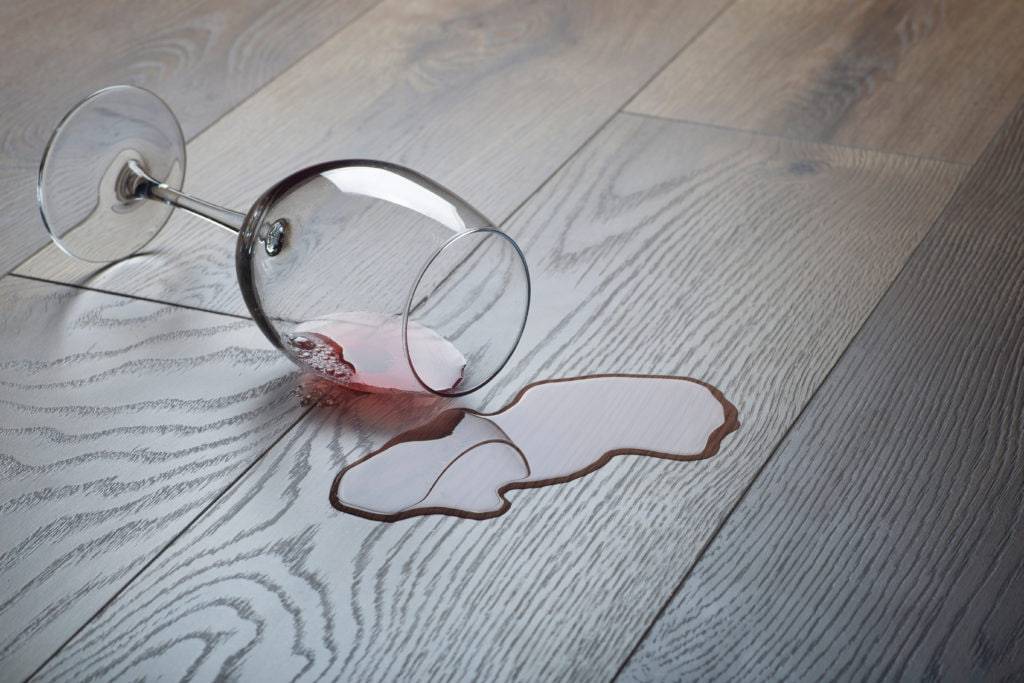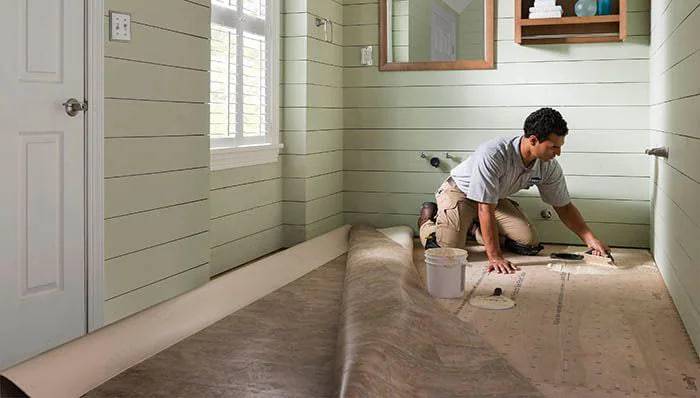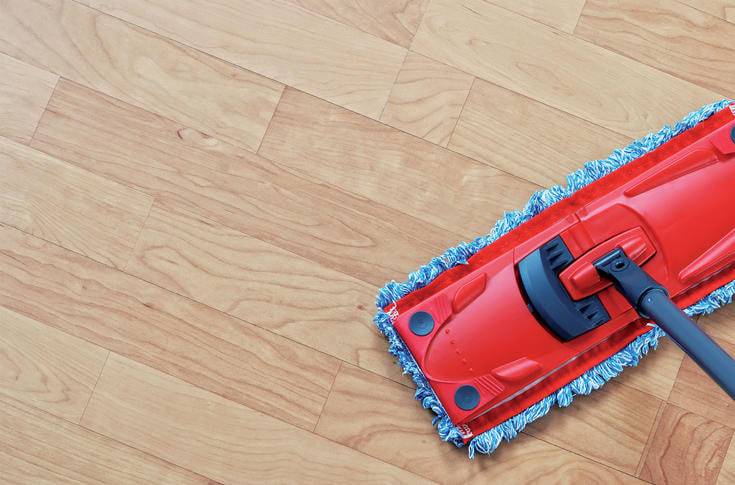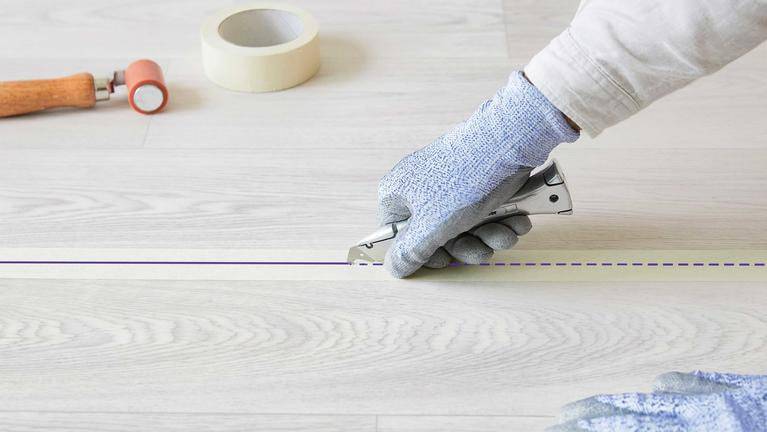In the realm of flooring options, vinyl sheet flooring stands out as a durable, versatile, and cost-effective choice for various areas of the home. Unlike its rigid tile or plank counterparts, sheet vinyl comes in large, continuous rolls that provide seamless coverage, eliminating the need for visible seams or grout lines. This characteristic makes sheet vinyl a popular choice for high-traffic areas like kitchens, bathrooms, and basements.
Sheet vinyl’s versatility extends to its design. Manufacturers offer a vast array of patterns, styles, and colors to mimic the look and feel of natural materials like wood, stone, tile, and even carpet. This versatility allows homeowners to achieve the desired aesthetic in any room, from rustic farmhouse charm to sleek modern elegance.
Beyond its aesthetic appeal, sheet vinyl boasts impressive durability and resistance to wear and tear. The flooring’s top layer, typically made of urethane, is designed to withstand scratches, scuffs, and even spills, making it a practical choice for homes with active lifestyles. Additionally, sheet vinyl is water-resistant and can easily withstand occasional moisture exposure, making it a perfect fit for areas prone to spills and dampness.
With its combination of durability, versatility, and affordability, sheet vinyl flooring emerges as a compelling choice for homeowners seeking a practical and stylish flooring option for their homes. Its ease of installation and low maintenance requirements further enhance its appeal, making it a popular choice for DIY enthusiasts and professional installers alike.
Benefits of Vinyl Sheet Floors
Durability
Sheet vinyl is known for its exceptional durability, making it a sound investment for high-traffic areas. The top layer, typically made of urethane, is highly resistant to scratches, scuffs, and even heavy foot traffic. With proper care, sheet vinyl can last for decades, providing years of wear and tear without compromising its appearance.
Water Resistance
Unlike traditional flooring materials like carpet or wood, sheet vinyl is highly water-resistant. The vinyl composition makes it impervious to moisture damage, making it an ideal choice for kitchens, bathrooms, and laundry rooms where spills and damp conditions are common.
Versatility
Sheet vinyl offers a remarkable degree of versatility, allowing homeowners to customize their flooring to match any decor style. Manufacturers provide an extensive range of colors, patterns, and designs, mimicking the look and feel of natural materials like wood, stone, tile, and even carpet. This adaptability ensures that sheet vinyl can seamlessly blend with any existing decor, creating a cohesive and visually appealing ambiance.
Easy Maintenance
Sheet vinyl is incredibly low-maintenance, making it a practical choice for busy homeowners. Regular sweeping or vacuuming removes dirt and debris, while a simple damp mop can address spills and stains without damaging the flooring. Unlike carpets or hardwood, sheet vinyl does not require frequent waxing or polishing, further reducing maintenance efforts.
Cost-Effectiveness
Sheet vinyl is generally considered a budget-friendly flooring option, offering exceptional value for the price. Compared to more expensive materials like hardwood or tile, sheet vinyl provides comparable durability and aesthetics at a fraction of the cost. This makes it an attractive option for homeowners seeking a stylish and practical flooring solution without breaking the bank.
Easy Installation
Sheet vinyl is relatively easy to install, making it a DIY-friendly option for homeowners. The flooring typically comes in large rolls that are unrolled and adhered to the subfloor, eliminating the need for intricate tile patterns or precise measurements. Professional installation is still available for those who prefer expert assistance.
Comfort Underfoot
Sheet vinyl is known for its comfortable underfoot feel, providing a soft and cushioned surface that is gentle on bare feet. This feature is especially beneficial for families with children or pets, as it reduces the risk of falls and provides a pleasant walking experience.
Keeping Vinyl Sheet Flooring Looking Its Best
Vinyl sheet flooring is a popular choice because it’s easy to clean and maintain. Here are some tips for cleaning vinyl sheet flooring so that it looks its best for years to come.
Daily Cleaning
Regular sweeping or vacuuming is the best way to remove dirt and debris from vinyl sheet flooring. This will prevent them from scratching or staining the surface. If you have pets, it’s especially important to vacuum regularly to remove pet hair and dander.
Spills and Stains
For spills and stains, prompt action is key. Wipe up spills immediately with a clean, absorbent cloth. For stubborn stains, you can mix a solution of one cup of white vinegar to one gallon of warm water. Dip a clean cloth in the solution and wring it out well. Blot the stain gently until it is removed.
Deep Cleaning
Deep cleaning is recommended every few months or so. To deep clean your vinyl sheet flooring, mix a solution of one cup of liquid dish soap to one gallon of warm water. Mop the floor with the solution, using a soft, clean mop. Rinse the mop often to prevent the solution from becoming too dirty. Allow the floor to dry completely before walking on it.
Avoid Abrasives
Do not use abrasive cleaners or scouring pads on vinyl sheet flooring. These can scratch the surface and damage the finish.
Protect from Moisture
If water spills on the vinyl sheet flooring, wipe it up immediately to prevent moisture from seeping into the seams and causing damage.
Protect from Footwear
High heels can damage vinyl sheet flooring, so it’s best to ask guests to remove their shoes. You can also put doormats at entrances to help catch dirt and debris.
Use a Protectant
A vinyl sheet flooring protectant can help to prevent scratches and stains. Apply the protectant according to the manufacturer’s directions.
With proper care, your vinyl sheet flooring will look great for years to come.
Here are some additional tips for cleaning vinyl sheet flooring:
- Use a mild detergent specifically designed for vinyl sheet flooring.
- Do not use hot water, as this can warp the flooring.
- If you have pets, it’s a good idea to use a pet-friendly detergent.
- Be sure to rinse the mop thoroughly after each use to prevent streaks.
- Allow the floor to air dry completely before walking on it.
By following these tips, you can enjoy the beauty and durability of your vinyl sheet flooring for many years to come.
Installing Vinyl Sheet Flooring
Installing vinyl sheet flooring can be a relatively easy DIY project if you’re willing to follow the instructions carefully and have the right tools and materials on hand. Here’s a step-by-step guide to installing vinyl sheet flooring:
Preparation
- Remove existing flooring. If you have any existing flooring, such as carpet, tile, or wood, remove it completely. This will give you a clean, smooth surface to lay down your new vinyl sheet flooring.
- Clean the subfloor. Once the old flooring is removed, clean the subfloor thoroughly. Remove any dirt, debris, or grease that could interfere with the adhesion of the vinyl sheet flooring.
- Repair any damage to the subfloor. If there are any cracks, holes, or other damage to the subfloor, repair them before laying down the vinyl sheet flooring. This will help to ensure that the flooring is stable and will not sag or crack over time.
- Apply a primer to the subfloor. A primer will help to increase the adhesion of the vinyl sheet flooring to the subfloor. Apply a primer according to the manufacturer’s instructions.
Cutting the Vinyl Sheet Flooring
- Measure the room. Measure the length and width of the room where you will be installing the vinyl sheet flooring. Add 6 inches to each measurement to allow for expansion and contraction.
- Cut the vinyl sheet flooring. Use a sharp utility knife to cut the vinyl sheet flooring to the appropriate size. Make sure to cut the flooring straight and even.
- Leave a gap around the perimeter of the room. When you lay the vinyl sheet flooring, leave a gap of about 1/2 inch around the perimeter of the room. This will allow for expansion and contraction.
Adhering the Vinyl Sheet Flooring
- Apply adhesive to the subfloor. Follow the manufacturer’s instructions for applying adhesive to the subfloor. Most adhesives are applied in a thick bead around the edges of the room and in a thin layer across the entire floor.
- Lay the vinyl sheet flooring. Carefully unroll the vinyl sheet flooring onto the subfloor. Make sure to center the flooring in the room and leave a gap around the perimeter.
- Roll out the vinyl sheet flooring. Use a floor roller to roll out the vinyl sheet flooring, starting from the center and working your way out to the edges. This will help to eliminate any air bubbles and wrinkles in the flooring.
- Trim the excess vinyl sheet flooring. Once the flooring is rolled out, trim off the excess vinyl sheet flooring along the perimeter of the room. Use a sharp utility knife to make a clean cut.
Seaming the Vinyl Sheet Flooring
- Apply seam sealer to the joints. Most vinyl sheet flooring comes with a self-adhesive seam sealer. Apply the seam sealer to the joints between the sheets of flooring, following the manufacturer’s instructions.
- Roll out the seam sealer. Use a seam roller to roll out the seam sealer, making sure that the edges of the vinyl sheet flooring are firmly adhered together.
Finishing Touches
- Install transition strips. If you have any transitions between different flooring types, install transition strips to bridge the gap between the vinyl sheet flooring and the other flooring.
- Clean up. Once the vinyl sheet flooring is installed, clean up any excess adhesive or seam sealer.
- Allow the flooring to cure. Follow the manufacturer’s instructions for allowing the flooring to cure before walking on it. This will help to ensure that the adhesive is fully bonded and that the flooring is durable.
Summary
Vinyl sheet flooring is a popular choice for its ease of cleaning and maintenance, durability, versatility, and cost-effectiveness. It is also relatively easy to install, making it a DIY-friendly option for homeowners. This article provides a step-by-step guide to installing vinyl sheet flooring, from preparation to finishing touches. With careful planning and execution, you can achieve a beautiful and durable vinyl sheet flooring installation in your home.
FAQs about Vinyl Sheet Flooring
What is vinyl sheet flooring?
Vinyl sheet flooring is a type of flooring that is made up of a layer of vinyl bonded to a backing. It is typically available in rolls that can be easily unrolled and adhered to the subfloor. Vinyl sheet flooring is known for its durability, affordability, and ease of maintenance.
What are the benefits of vinyl sheet flooring?
There are many benefits to using vinyl sheet flooring, including:
- Durability: Vinyl sheet flooring is a very durable material that can withstand heavy foot traffic and spills. It is also water-resistant and can be used in areas that are prone to moisture.
- Affordability: Vinyl sheet flooring is a relatively affordable option compared to other types of flooring, such as hardwood or tile.
- Ease of maintenance: Vinyl sheet flooring is very easy to clean and maintain. Simply sweep or vacuum regularly, and mop with a mild detergent solution for deeper cleaning.
- Versatile: Vinyl sheet flooring comes in a wide variety of colors, patterns, and styles to match any décor.
- Easy installation: Vinyl sheet flooring is generally considered a DIY-friendly project. It is typically installed by unrolling the flooring and adhering it to the subfloor with adhesive.
What are the drawbacks of vinyl sheet flooring?
There are a few drawbacks to using vinyl sheet flooring, including:
- Not as durable as hardwood or tile: Vinyl sheet flooring is not as durable as hardwood or tile, and it may scratch or scuff more easily.
- Not as luxurious as hardwood or tile: Vinyl sheet flooring does not have the same luxurious look and feel as hardwood or tile.
- May not be suitable for high-traffic areas: Vinyl sheet flooring may not be the best choice for areas with extremely high foot traffic, such as commercial kitchens or retail spaces.
What is the best way to clean vinyl sheet flooring?
The best way to clean vinyl sheet flooring is to sweep or vacuum regularly to remove dirt and debris. For spills and stains, wipe up the area immediately with a clean, absorbent cloth. For stubborn stains, you can use a mild detergent solution. Avoid using abrasive cleaners or scouring pads, as these can scratch the surface of the flooring.
Is vinyl sheet flooring safe for pets?
Yes, vinyl sheet flooring is generally safe for pets. However, it is important to clean up any pet accidents immediately to prevent damage to the flooring. You may also want to consider using a pet-friendly cleaner.
Is vinyl sheet flooring fire-resistant?
Yes, vinyl sheet flooring is fire-resistant. It is typically made with a special backing that helps to prevent the spread of fire.
What is the lifespan of vinyl sheet flooring?
With proper care, vinyl sheet flooring can last for many years. However, the lifespan of the flooring will vary depending on the quality of the flooring and the amount of wear and tear it receives.
Is vinyl sheet flooring a good investment?
Vinyl sheet flooring is a good investment for homeowners who are looking for a durable, affordable, and easy-to-maintain flooring option. With proper care, vinyl sheet flooring can provide years of enjoyment.





